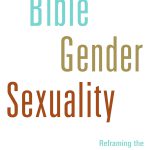In the midst of cultural chaos, the church is being pressed on every side to explain why homosexuality is not part of God’s good plan. So we need substantive, evangelical books on the issue of homosexuality. Peter Hubbard’s Love Into Light: The Gospel, the Homosexual, and the Church is such a book—one every pastor and lay leader should have and read.
Put simply, Love Into Light is a good book because it’s centered on Christ and glorifying to God. One of the weaknesses in the ex-gay community is an overreliance on psychoanalytic frameworks for purity and transformation. Same-sex strugglers don’t need more psychoanalysis; they need more Jesus. As Hubbard writes, “Jesus came to model and mediate the cure” (47). And while Hubbard uses psychological concepts in his book, they are not central. What is? Beautiful confidence in the person and work of Jesus. You get the sense that Hubbard and his church have seen Christ do marvelous things with those who struggle with same-sex attraction, and they want you and your church to experience the same thing.
Love Into Light is a good book because the author cares about the LGBT community and wants them to know they are welcomed in the church. Same-sex strugglers need not hide in shame or feel less than human in Jesus’ community. Instead, as Hubbard writes, “True Christianity creates a casteless society, because we see people through the lens of God’s particular creation: ‘you knitted me together in my mother’s womb’” (24). As someone who met Jesus in an amazing church about 16 years ago, as I was emerging from my own homosexual brokenness, this book reminded me just how awesome it is when sinners know they are loved and welcomed.

Love Into Light: The Gospel, the Homosexual, and the Church
Peter Hubbard
Love Into Light: The Gospel, the Homosexual, and the Church
Peter Hubbard
Love Into Light is also a good book because it’s not afraid to shout the truth of Scripture from the rooftops. Personally, I’m tired of some in the church—think Andrew Marin, Brian McLaren, Justin Lee, and Rob Bell—who want to either be theologically accommodating or silent on the issue of homosexuality. Hubbard doesn’t make the same mistakes. Instead, he speaks clearly about what the Bible has to say without apologizing for the truth found therein. He talks about sin, celibacy, marriage, suffering, and grace. I found all of this engaging, helpful, and refreshing.
Additionally, this is a good book because it lays out the most popular arguments for homosexual practice today and gives remarkably competent, biblical responses as to why these arguments fail. Most of us don’t have the time to research all the popular pro-gay arguments today. Hubbard, however, answers three of the most common arguments. His book is by no means an exhaustive response, but it’s not meant to be. Instead, it gives readers an evangelical, biblical worldview on homosexuality and points them in the right direction if they wish to go deeper.
And Love into Light is a good book because it calls the church to be on mission to our LGBT friends. One of the best sentences in the book is, “The way we live should raise questions, not just arguments” (155). Hubbard shows how his church is learning to be a grace-filled community calling all people—including those who struggle with same-sex desire—into a radical life of following Jesus. This might be the greatest contribution of the book. It is a call to the whole church to step up and be agents of the gospel. Hubbard gives specific, practical advice here. He summons the church to close proximity to the LGBT community and calls us to practice Christian hospitality with our gay neighbors. Go to their turf, build friendships, love them unconditionally, and share the love of Jesus.
For all the good in the book, I wish Hubbard had clarified more completely what the gospel can accomplish in a person with same-sex conflict. Overall I think he could have gone deeper. In chapter 3, he uses words like “activity” (59), “desires/emotions” (61), “passions” (63), “arousal” (63), “thoughts” (63) and “identity” (63), and he doesn’t take the time to clarify what he thinks about all of these various aspects of homosexual brokenness in relation to one another. How are they similar? How are they different? And, most important, how can the gospel change these various aspects of homosexual brokenness? Or should we even expect it to? Hubbard circles around these issues, defines some of these terms, does important work, and gets us close to what must be dealt with; I just wish he would have given us more.
This is an important and helpful book. God is using Peter Hubbard to further the gospel in a lost and broken world. For that, we all ought to be thankful.


































